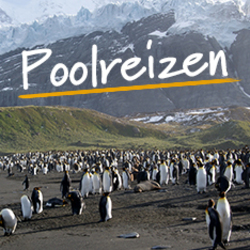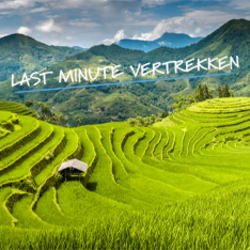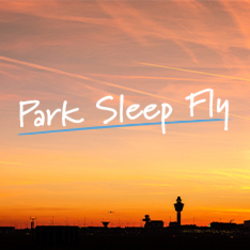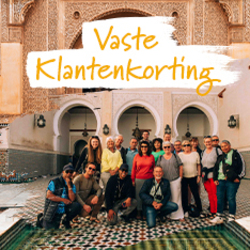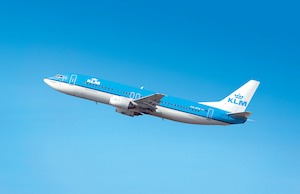Activities
- Culture
- Cultural Wonders
- Festival Holidays
- Multi-Country Holidays
- Natural Wonders
- Multi-Country Culture Holidays
- New Cultural Holidays
- — Experience the highlights of two unforgettable destinations: North India and Nepal — Visit all three cities of India’s famed Golden Triangle: Delhi, Agra and Jaipur — See the magnificent Taj Mahal in the soft glow of sunrise — Cruise the Ganges at dawn when Hindu pilgrims visit the holy waters — See the mighty Annapurna mountains from a hilltop fort in Pokhara — Search for wildlife on a jeep and canoe safari in Chitwan National Park
Food
-
1
Arrive Delhi; afternoon sightseeing of Humayun's Tomb and New Delhi
Welcome to Delhi! The group flight will arrive into Delhi this morning and transfer to our hotel. Those who have made their own flight arrangements, we provide free arrival transfers to the start hotel from the airport. Please ensure you have provided your flight details to our customer operations team no later than 2 weeks prior to arrival. In the afternoon (approximately 2pm), we head out to get our bearings and explore the city, beginning with New Delhi, visiting the tomb of Mughal emperor Humayun, which was built by his widow Hamida Banu Begam and is now a Unesco World Heritage site. We then drive past fine colonial buildings in New Delhi, including Rashtrapati Bhawan, a 320-acre (130ha) estate built by British architect Edwin Lutyens in 1931, which comprises the official residence of the President of India; Parliament House; and India Gate, a memorial dedicated to soldiers who died during the First World War. We return to the hotel for a relaxed evening at leisure. Accommodation: Bloom Hotel CR Park (or similar)
-
2
Morning tour of Old Delhi; drive to Jaipur
Continue exploring the capital after breakfast, starting outside Jama Masjid, the largest mosque in India, before being guided through the narrow streets of Old Delhi, through the Kinari Bazar (or we can explore by rickshaw – additional cost). We finish the Old Delhi tour at Jama Masjid and learn about the history of the building. Those interested can enter the mosque (fees may apply). In the early afternoon, we drive (approximately five to seven hours, depending on traffic) to the Pink City of Jaipur. Accommodation: Vesta Maurya Palace (or similar)
-
3
Explore Jaipur; evening free
Enjoy a full day to explore Jaipur, the capital of Rajasthan and one of the most attractive cities in India. Built in the late 18th century, it is a planned city of broad sandstone avenues that were later painted pink. Rise early, heading out for a dawn walking tour as the Pink City begins to wake. Visiting different chowkris (blocks) within the walled city, we can see the local people start their day and watch the rituals that take place in early morning markets and small temples. We can also interact with different artisan communities, while also sampling local food and drink. We return to the hotel in time for a later breakfast and to freshen up, before we head out again mid-morning. We visit one of the most intriguing sites in India, Jantar Mantar (Jaipur Observatory), an assembly of immense marble-and-brass astronomical instruments in a pleasant garden. We also see the impressive landmark, the Hawa Mahal (Palace of the Winds). Then travel just outside the main city to the Amber Palace, an imposing hilltop fort above a lake with large courtyards, finely decorated interiors and a Chamber of Mirrors. The evening is free for you to relax. Accommodation: Vesta Maurya Palace (or similar)
-
4
Drive to Agra via Fatehpur Sikri
We begin by driving to Agra via the deserted ancient city of Fatehpur Sikri. Formally the capital of the Mughal empire, this wonderfully preserved ghost town was constructed by Emperor Akbar between 1570 and 1585 and reflects his ideals in art, religion and architecture. This impressive and well-preserved citadel became his capital in 1571, after the blessing of a local Moslem holy man correctly predicted the birth of a longed-for son, his successor the Emperor Jehangir. The mosque, designed to hold 10,000 worshippers, the palaces, residences and halls of audience are built in decorative red sandstone. Akbar soon left Fatehpur Sikri to secure his outlying territories, leaving this city much as we see it today. The site is one of the most atmospheric in northern India and its position on a ridge overlooking the modern village below, and its wonderful state of preservation, give us a taste of its majestic past. Accommodation: Taj Vilas (or similar)
-
5
Sunrise at Taj Mahal; visit the Red Fort; overnight train to Varanasi
Rise very early before breakfast to see the incredible spectacle of sunrise over the Taj Mahal – an experience you’re never likely to forget. The Moghul Emperor Shah Jahan built the landmark in memory of his beloved wife, Mumtaz Mahal, who died in 1631. The New World Wonder is serenely beautiful and never fails to amaze; the white-marble exterior changes colour according to the position of the sun and is made even more beautiful by the rich interior detail. Within striking distance is the imposing Red Fort of Akbar, whose mighty sandstone walls enclose the white-marble Pearl Mosque and the palaces, halls, courtyards and fountains of his sons and successors, Jehangir and Shah Jahan. It is here that the latter spent his last years, imprisoned by his own son Aurangzeb. Agra is also a hub for a wide variety of handicrafts including inlaid and carved marble, carpets and clothes and there should be time for shopping. In the evening, we head to Tundla station to catch our overnight train to Varanasi – an excellent opportunity to experience the famed railways of India and interact with the local people. Accommodation: Sleeper train
-
6
Arrive Varanasi; afternoon visit to Sarnath, the site of Buddha's first sermon
On arrival in Varanasi by 6am, we transfer to our hotel. Rooms may not be available until midday but efforts are made to make it earlier if possible. In the afternoon, we visit the nearby Sarnath Temple. The main monument here is the Dhamekh Stupa, the spot where Buddha is believed to have given his first sermon. The evening is free to relax. Accommodation: Hotel Surya (or similar)
-
7
Dawn boat ride on Ganges visiting bathing ghats; free afternoon; witness an evening aarti ceremony
Varanasi, on the Ganges, is one of the holiest cities in India and a key destination in Hinduism: there are thousands of pilgrims, wandering holy men (Sadhus), religious leaders and casual visitors. Explore the narrow lanes and many temples or watch the Hindu ceremonies that take place around the clock. We rise early this morning, just before dawn, and take a boat onto the Ganges. On this trip, we see the city wake up and the extraordinary ghats (the steps leading down to the river), where thousands of Hindu pilgrims come every morning to submerge themselves in the river's holy waters. In the evening, witness an aarti ceremony from the banks, in which priests wave lamps, chant and ring bells and devotees join the rituals. Accommodation: Hotel Surya (or similar)
-
8
Cross border to Nepal; head to the World Heritage site of Lumbini
We leave the hotel at 6am and board a private bus for our long drive to Nepal. We drive across the northern plains, passing through a few towns and lots of villages. Leave our bus at the Saunali border and walk (approximately 1,640ft/500m) through customs and immigration to Nepal. In Nepal, we enter the terai, the narrow plain running along the southern breadth of the country. We drive (approximately one hour) to Lumbini, birthplace of the Buddha, where we spend the night. The total driving time today is approximately 12 hours. Accommodation: Buddha Maya hotel (or similar)
-
9
Drive to Chitwan National Park
Early this morning there is a short (optional) rickshaw ride around Lumbini gardens. The Buddha was born here, and the area is being developed into a place of pilgrimage for Buddhists from all over the world. Travelling east and parallel to the mountains, we reach Chitwan (approximately a four-hour drive), where we spend two nights. The park, with jungle and thick forest, was once a royal hunting ground but was made a conservation area in 1973. During your stay, you can enjoy an optional ox-cart ride in Tharu village or an evening dance performance, both providing a glimpse into the fascinating lives of the local people. Accommodation: Green Mansions Jungle Resort (or similar)
-
10
Chitwan National Park; jeep safari and dug-out canoe excursion
Chitwan National Park and the surrounding forest cover 356sqmi (923sqkm) of the terai and afford excellent wildlife-viewing opportunities. Here you have an excellent chance of seeing Indian one-horned rhinos, sambar and chital deer, langur and rhesus monkeys, mongooses, jackals, otters and crocodiles. The more elusive animals include tigers, leopards, sloth bears and Indian bison. More than 500 bird species have also been recorded here. Wildlife activities are managed and escorted by experienced naturalist guides and included in your stay is a jeep safari and dug-out canoe excursion. Birdwatching outings can also be arranged. Accommodation: Green Mansions Jungle Resort (or similar)
-
11
Drive to Pokhara with views of the Annapurna range en route
Today’s journey to Pokhara is 87mi (140km) and takes four to five hours. We follow the gorge of the Narayani River and soon we are in the Himalaya foothills. The scenery changes dramatically from the forests and farmlands of the terai to steep, terraced hills. As we near Pokhara, we begin to see the magnificent Annapurna mountains, part of the Himalaya range. At only 3,280ft (1,000m), among semi-tropical plants and with a delightfully warm climate, it is much closer to the main Himalaya peaks than Kathmandu. Machhapuchhare (Fishtail Peak) dominates the skyline, especially on a clear morning. We stay in a simple hotel near Phewa Lake, with a wide choice of restaurants and other facilities nearby. Accommodation: Dahlia Boutique Hotel (or similar)
-
12
Sunrise over mountains; dawn walk from Sarangkot to Pame
Head into the hills before dawn this morning for an even better views of the peaks. An early start is required for the clearest view; once there, the whole Annapurna range can be seen with virtually no intervening hills. We start by driving (approximately 40 minutes) to Sarangkot; from there, it’s a short walk to the remains of a hilltop fort that overlooks the lake – one of the best viewpoints for Machhapuchhare, the most treasured mountain in the region. After enjoying time here, walk back towards Pokhara, descending steps and trail paths, finishing just before at Pame (approximately 2hr 30min walk), where you can stop to enjoy your packed breakfast before a short transfer back to our hotel. A packed breakfast will be arranged by your tour leader for anyone wishing to take part in the walk down to Pame from Sarangkot. If you choose not to join the walk, a transfer will be arranged from Sarangkot back to Pokhara, returning to the hotel for breakfast. Please let your tour leader know the day before if you do not wish to join the full morning walk. For many, Pokhara is a place to relax, enjoying a spot beside the beautiful lake. This afternoon, sit back and take in the surroundings or perhaps rent a rowboat or bicycle for a few hours exploring the lake at a leisurely pace. Accommodation: Dahlia Boutique Hotel (or similar)
-
13
Follow Marsyangdi and Trisuli rivers to Kathmandu
Leave early for the long drive to Kathmandu, along the Chinese-built road running parallel to the main Himalaya range. The distance is only 125mi (200km) but it is a slow climb through the mountains and ongoing road-widening construction along the route plus some bumpy conditions in places mean the journey takes 10 to 12 hours. The views, however, are stunning as we follow the Marsyangdi and Trisuli rivers, passing numerous villages and terraces stretching up the hillside. We arrive in Kathmandu this evening and check into our centrally located hotel. Accommodation: Royal Singi Hotel (or similar)
-
14
Optional Everest flight; visit Pashupatinath and Bodnath; free time
We have today to explore Kathmandu and the valley. In the early morning, you could take a scenic flight to see Everest (this can be booked and paid for on arrival in Kathmandu; see the Extra Expenses and Spending Money section of the Trip Notes for costs). Today there is a half-day sightseeing tour of Pashupatinath, the most important Hindu temple in the valley, and Bodnath, one of the largest Buddhist stupas in the world. The rest of the time is free for individual exploration. You may like to visit Durbar Square with its old royal palace and intricately carved temples, or Swayambhunath, a hilltop stupa home to hundreds of macaques. Kathmandu also offers many shopping opportunities: clothes, trinkets, Tibetan and Nepalese handicrafts and superb bookshops. It also has a wide variety of restaurants serving some of the best food from the sub-continent and you can find wonderful pizzas and apple pie. Accommodation: Royal Singi Hotel (or similar)
-
15
End Kathmandu
The adventure comes to an end this morning at check-out. Unless, of course, you’d like to join our exciting extension, in which you spend four days hiking in the Annapurna region, taking in magnificent mountain views as you pass through Gurung villages. This extension would commence from day 13, starting in Pokhara. Speak to your sales representative to book.







